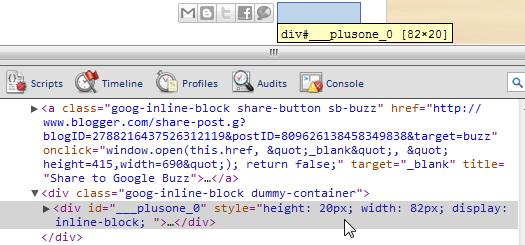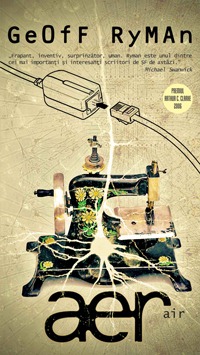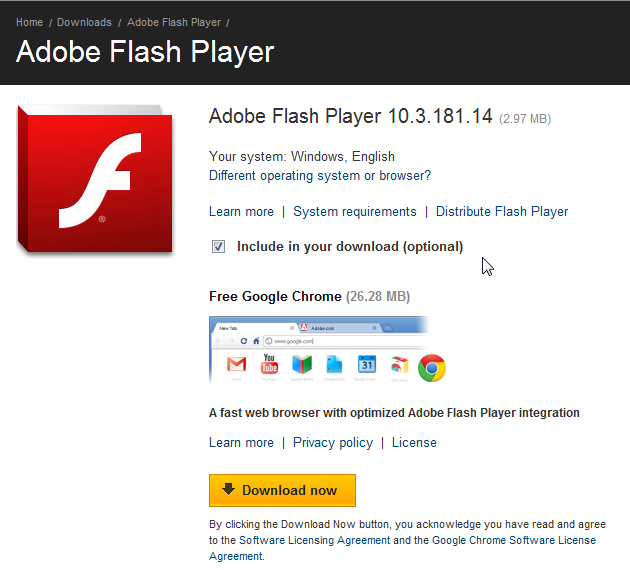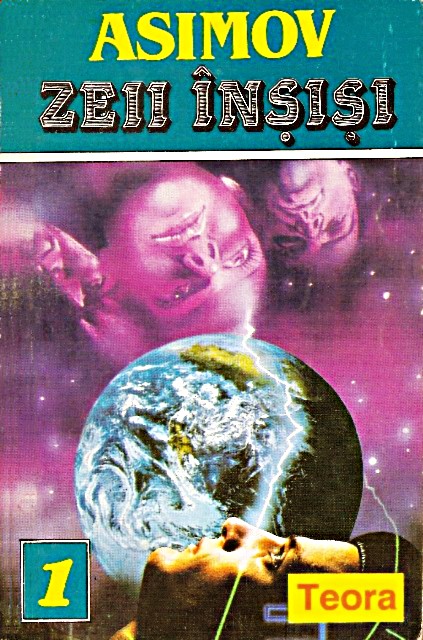While writing my previous article yesterday, I noticed something odd about the Blogger sharing buttons placed after the main body of the post: they don’t align properly to the right anymore. I checked with Firefox as well, and the same defect shows up there as well. So, after publishing the article, I took a look at the page through Chrome’s Web Inspector. I was both surprised and excited by what was hiding behind the seemingly empty space: code for a +1 button!
31 May 2011
Code for +1 button shows up on Blogger
The Firefox version of Chrome’s Omnibox
As a user of Firefox beta, sometimes you get the chance to try out some of their experiments and user studies through Test Pilot. Last week it prompted me to test a different user interface that looked very familiar. While the experiment only lasted for two days, you can install an experimental extension, AwesomeBar HD, to keep using it indefinitely.
AwesomeBar HD spins-off from the Home Dash project to focus experiments on a combined location and search bar with a Mozilla twist. This means placing you, as a user, first and respecting your privacy, so unlike other browsers, the combined input will not send every letter you type to a remote server.
You probably guessed by now: it’s the Firefox version of Chrome’s Omnibox, as both the functionality and the innuendo at the “privacy issues” in Chrome show. Naturally there are some differences: in Firefox you don’t really have individual search engines, instead there are categories like general search, videos, music, news, etc. each with it’s selection of (always three, for some reason) specialized search engines. After clicking in this combined field, all the categories are displayed on the right and you can click them to activate one or choose another engine from the drop-down list. Like in Chrome, typing a couple of letters from the category name and pressing ‘Tab’ will autocomplete and activate the search.
22 May 2011
Geoff Ryman - Aer
 Chung Mae e o simplă țărancă dintr‑un sat pierdut undeva în munții Asiei Centrale, în țara fictivă Karzistan. Muncește cot la cot cu ceilalți săteni la cultivarea orezului, gătește pentru soțul ei, Joe, fratele și tatăl acestuia, deretică prin casă și pentru a mai completa veniturile modeste ale familiei joacă rolul de specialistă în modă pentru sat, aducând modele noi din oraș și croind rochii pentru tinerele satului, deși ea însăși nu știe să citească revistele la care face referire. Nici pe departe un personaj tipic pentru un roman SF. Probabil cel mai marcant eveniment din viața ei fusese plecarea fiului la oraș pentru a intra în armată. Asta până la sosirea Aer‑ului.
Chung Mae e o simplă țărancă dintr‑un sat pierdut undeva în munții Asiei Centrale, în țara fictivă Karzistan. Muncește cot la cot cu ceilalți săteni la cultivarea orezului, gătește pentru soțul ei, Joe, fratele și tatăl acestuia, deretică prin casă și pentru a mai completa veniturile modeste ale familiei joacă rolul de specialistă în modă pentru sat, aducând modele noi din oraș și croind rochii pentru tinerele satului, deși ea însăși nu știe să citească revistele la care face referire. Nici pe departe un personaj tipic pentru un roman SF. Probabil cel mai marcant eveniment din viața ei fusese plecarea fiului la oraș pentru a intra în armată. Asta până la sosirea Aer‑ului.
Aer‑ul nu e un concept prea îndepărtat de experiența omului modern; de altfel romanul se plasează în viitorul apropiat, în anul 2020, la a 60‑a aniversare a Madonnei. Pe scurt următoarea generație de Internet, care nu mai are nevoie de computere sau telefoane inteligente – sau de „televizoare” ca în roman – pentru a interacționa cu oamenii; Aer‑ul se conectează direct cu creierul uman și crează acolo o interfață, care se vrea completă și definitivă. În teorie e modalitatea perfectă de a aduce beneficiile societății informaționale în toate colțurile Pământului, chiar și celor analfabeți, ca Mae; un Internet complet democratic, în care toți au aceleași drepturi, pot face și afla virtual orice. O singularitate tehnologică aducând iluminarea și transformând instantaneu fiecare om și societate. Numai că...
18 May 2011
Quick fix for Google Reader’s Tweet button
As reported on The Next Web, the New Twitter no longer supports the old method of setting the status through a query string, a vital part in many custom-made ‘tweet’ buttons. Instead, developers are encouraged to use the newly released ‘Web Intents’, which also offers more functionality. Unfortunately, this change also affects the built-in ‘Send To’ link in Google Reader, as many users have complained on Twitter. Until Reader updates to take care of the issue, you can manually create a ‘Send To’ link to replace the broken one, with the following parameters:
Name: Send to New Twitter
URL: http://twitter.com/intent/tweet?text=${title}&url=${url}
Icon URL: http://si0.twimg.com/images/dev/cms/intents/bird/bird_blue/bird_16_blue.png
 Another option would be to switch back to ‘Old Twitter’, which seems to still accept the old tweeting method, as mentioned on the Google Reader help forum. But this is clearly not a long-term solution, since the old interface will be scrapped at some point. Personally I rarely use the ‘tweet’ button, because I have enabled Reader2Twitter that syncs my shared items with Twitter in real-time. The only exception is when I send articles to my secondary Twitter account.
Another option would be to switch back to ‘Old Twitter’, which seems to still accept the old tweeting method, as mentioned on the Google Reader help forum. But this is clearly not a long-term solution, since the old interface will be scrapped at some point. Personally I rarely use the ‘tweet’ button, because I have enabled Reader2Twitter that syncs my shared items with Twitter in real-time. The only exception is when I send articles to my secondary Twitter account.
16 May 2011
Google Chrome experiments with compact navigation
Looks like version 13 will bring more innovations to Chrome than the ones I wrote about last week. After a new update of the Canary channel (now at 13.0.767.0 on Windows), a new command-line flag was added, “Compact Navigation”. This is part of an older UI experiment that explores several other options, like “sidetab navigation” – this was actually the first flag offered in Chrome, “Side Tabs” – and “touchscreen navigation”.
Compact Navigation
Adds a "Hide the toolbar" entry to the tabstrip's context menu. Use this to toggle between always displaying the toolbar (default) and only opening it as a drop down box as needed.
After enabling this experiment from about:flags and restarting the browser, the new interface can be toggled on or off from the tab context menu. As intended, the main strength is even more vertical space for the web pages, by hiding the Omnibox. Some of the controls – back & forward and the wrench menu – are still available on the tab bar. The Omnibox and the other buttons (stop/reload, bookmark and any extensions residing in the Omnibox) are hidden by default; they are visible only as long as the pages are loading or for a short time after you click on the active tab.
15 May 2011
Remove attachments from Gmail
As far as webmail goes, Gmail is the most advanced feature-wise; sometimes I get the feeling the competition is not even trying to catch up. Even so, there are some useful things you cannot do in the Gmail web interface, that are available in offline email clients. One of those features I found very handy both in Lotus Notes and in Outlook is the ability to remove attachments from messages while keeping the text; the conversations are usually as important as the files. It’s a life saver when you are nearing your storage quota: search the largest messages, save the attachments locally and then delete them from the email server. I prefer this to creating an ‘archive’, because I hate having to search for messages in two different places – the normal inbox and the archive. As long as you have a good system for filing the attachments this should be more efficient.
You might think Gmail doesn’t have the same problem with storage, because there’s so much of it available – more than 7 GB and counting. But an inbox can fill up much quicker than Gmail increases the storage. While Gmail on the web doesn’t support the removal of attachments, there is a workaround by using IMAP to connect Gmail to a local email client:
13 May 2011
Adobe suggesting Flash users to install Chrome
So, last night I was trying to get Angry Birds working in Internet Explorer following a tweet by Paul Rouget. Although others report it should be working, I got stuck at the opening screen, where I’m prompted to use Chrome or to install the latest Flash plug-in. For some reason, the update kept experiencing errors, but I did get a glimpse of something interesting while trying: during the first attempt, the install page suggested I also download Google Chrome, a fast web browser with optimized Adobe Flash Player integration
! 
I guess the move isn’t all that surprising, given the collaboration between Adobe and Google on several fronts, from desktop to mobile browsing. And Chrome was the first browser to take advantage of the new privacy features in Flash 10.3, allowing more control over the local storage. I actually had the new Flash version for some time in the Canary build and it looks like the stable channel was also updated before the official release from Adobe – which was the whole point in bundling the plugin with Chrome: to offer the most secure version in the shortest time possible.
I made several other attempts to install Flash in Internet Explorer, but that kept failing for the rest of the evening – it finally worked today, but Angry Birds still doesn’t recognize it. The screen offering the Chrome download has also refused to pop up again – it got replaced with another suggestion, Google Toolbar. Maybe I stumbled upon a not-yet-public partnership or maybe the site just remembered my first refusal of Chrome and stop suggesting it to me. Did you see this prompt while downloading Flash?
10 May 2011
What’s new in Chrome 13
It’s always nice to get a sneak preview of upcoming features and Chrome’s Canary channel makes this easy and relatively pain free, as the software is stable enough for daily browsing and bugs get resolved quickly. There seem to be many new things in version 13; here’s what caught my attention so far:
- A new internal page: chrome://gpu-internals that displays information about the hardware acceleration: what content is accelerated, depending on the flags enabled, the graphics driver version for debugging and a ‘Diagnostics’ sections that seems to be still under construction.
-
 Multiple profiles can be enabled through about:flags. Unfortunately, in the current implementation they are of limited use: since each profile is syncing with a Google account, you can only have as many profiles as you have Google accounts, plus one extra profile if you choose not to sign in – but then you will not have your settings and bookmarks synced… That is similar to opening an incognito window alongside a normal one, only with extensions on. Not to mention you cannot use Google Apps accounts to sign in. I also encountered problems with LastPass – occasionally it stops filling in user names and passwords –, which is not very surprising, since profiles change the way the browser handles cookies. I somehow doubt users will start creating new Google accounts just to enjoy profiles in Chrome – you can compensate to a degree by installing the Canary Channel, which is now available for Mac OSX as well.
Multiple profiles can be enabled through about:flags. Unfortunately, in the current implementation they are of limited use: since each profile is syncing with a Google account, you can only have as many profiles as you have Google accounts, plus one extra profile if you choose not to sign in – but then you will not have your settings and bookmarks synced… That is similar to opening an incognito window alongside a normal one, only with extensions on. Not to mention you cannot use Google Apps accounts to sign in. I also encountered problems with LastPass – occasionally it stops filling in user names and passwords –, which is not very surprising, since profiles change the way the browser handles cookies. I somehow doubt users will start creating new Google accounts just to enjoy profiles in Chrome – you can compensate to a degree by installing the Canary Channel, which is now available for Mac OSX as well.
08 May 2011
The third version of Yahoo! Mail
Even though it’s is one of the biggest free email providers, Yahoo! is rarely featured in the tech news – well, except when it’s down. This recent outage seems to be related to the roll-out of a new version for the online service, a “new beta”. I received a service announcement last month asking me to opt-in to the upgrade; the new version will be made available gradually for all users, in the coming months.
Dear George,
Thank you for being a Yahoo! Mail user for the past 10 year(s). We look forward to bringing you an even faster, safer, easier-to-use Yahoo! Mail very soon.
In the coming months, we will ask you to upgrade to the newest version of Yahoo! Mail for your account. All Yahoo! Mail customers will be asked to upgrade. But in the meantime, you don't have to wait, you can have the newest Yahoo! Mail today.
In terms of new features, this update doesn’t bring many innovations. The official announcement bolsters more speed, better spam protection and “never-ending storage”; in my experience the responsiveness has indeed improved – it even works faster that the simple “classic” version –, but the spam protection not so much – as you can see in the screenshot below. The “infinite” storage is of course nothing new and not dependent of the interface you choose. The integration with Facebook is now even tighter: whereas with the current version you could follow the news feed inside Yahoo! Mail, the beta brings Facebook chat to the inbox, alongside the already available Yahoo! Messenger.
01 May 2011
Isaac Asimov – Zeii înșiși

Dacă în Sfârșitul eternității Asimov imagina o societate bazată pe călătoria în timp, Zeii înșiși pornește de la conceptul de universuri paralele. Apărute ca o posibilitate matematică în mecanica cuantică, acestea au fost adoptate rapid de literatura science-fiction, dacă nu cumva drumul a fost invers, de la ficțiune la ipoteza științifică. Fanii Stargate sau Sliders sunt cu siguranță obișnuiți ca protagoniștii să întâlnească lumi aproape identice cu a noastră, cu diferențe mai mult sau mai puțin subtile, sau doppelgänger‑i cu planuri ascunse. În acest roman însă n‑o să întâlniți așa ceva; Asimov merge mult mai departe cu conceptul, imaginând un univers profund diferit, pornind de la legile de bază ale particulelor elementare și construind consecințe pe baza acestora.
Romanul e structurat în trei părți relativ independente, respectând forma în care a fost publicat original. Prima parte, „împotriva prostiei...” are loc pe Pământ, revoluționat de descoperirea unui izotop „interzis” al plutoniului – care n‑ar trebui să existe conform legilor cunoscute ale forței tari, sau cel puțin nu în universul nostru. Substanța se dovedește o sursă practic inepuizabilă de energie prin descompunerea radioactivă, botezată Pompa de Electroni, și îl propulsează pe descoperitorul ei, Frederick Hallam, la notorietate globală, poziție pe care el o apără cu strășnicie. Antagonistul său, tânărul fizician Peter Lamont, încearcă să aducă adevărul la suprafață, și anume că procesul de generare a energiei a fost de fapt inventat de para‑oameni și contribuția lui Hallam a fost minoră. Ba mai mult, Lamont emite ipoteza că folosirea continuă a Pompei va modifica legile locale ale fizicii, cauzând o reacție catastrofală în lanț în interiorul Soarelui. Întreaga parte se ocupă astfel cu conflictul între voințele celor doi, o imagine mai puțin măgulitoare, dar în mod sigur realistă, asupra cercetătorilor, de la care te‑ai aștepta să fie mai raționali, dar se dovedesc la fel de conduși de ambiție și încăpățânare ca și restul oamenilor.
 Multiple profiles
Multiple profiles